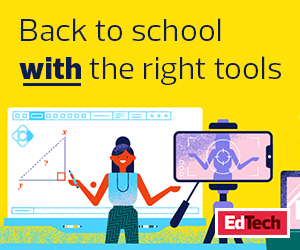Why the Focus Should Be on Student Engagement This Year
It’s evident that student engagement is critical to student learning and success. Kristin Kipp chair of education media design and technology at Rocky Mountain College of Art + Design, and Kerry Rice, professor in the department of educational technology at Boise State University, write at EdSurge that engaged learners “demonstrate stronger satisfaction with learning experiences, stronger achievement in courses and increased graduation rates.”
Kipp and Rice also explain that learning environments where fostering relationships, productive instructional strategies and social and emotional development are supported are where the deepest engagement happens. But with fewer face-to-face interactions, limited hands-on work and collaboration and an unfamiliarity with how online classes work, many students may feel isolated and disconnected from their teachers and peers during remote learning.
The University of Texas at San Antonio’s Urban Education Institute offers a snapshot of what that challenge looks like for districts today. According to the institute’s survey of participating San Antonio schools, 54 percent of high school students said their lessons were less engaging during remote learning. Meanwhile, 64 percent of high school students and parents of younger students reported that less learning occurred compared with pre-pandemic schooling.
Meanwhile, data from Education Week Research Center suggests that students in high-need neighborhoods are more at risk for academic decline. “The picture is very uneven. Not all of our kids are getting access to the same things,” Michael Casserly, executive director of the Council of the Great City Schools, tells Education Week.
Pair that with the “COVID-19 slide,” which suggests that students will be substantially behind in academics, particularly in mathematics, this coming school year, and existing inequities in education may worsen.
DISCOVER: Read about the lessons one district learned from spring’s remote learning.
How to Boost Student Engagement This Fall
At this point, there’s no question that school leaders should ensure all students have the infrastructure they need to participate and engage in this new learning environment. Nearly 20 percent of students across the country did not have access to the tech they need for remote learning in the spring, according to The Wall Street Journal. Broadband infrastructure, in particular, is still not deployed equally across the country. The digital divide also disproportionately impacts students from Black, Latino and Native American households.
There are school employees who are also lacking that infrastructure. An Education Week survey of nearly 800 teachers found that 4 percent did not have high-speed wireless access at home. That problem is even more apparent for those in rural areas where internet access is often weak and unreliable, pushing some teachers to work from school parking lots.
Many districts have distributed mobile hotspots and LTE-enabled devices. Others have turned to super hotspots, which are mobile routers strong enough to project Wi-Fi signals into a larger area. They can be installed on a school bus or inside and outside a school building, according to Digital Bridge K–12, an initiative to increase connectivity outside the classroom. Digital Bridge K–12 also has a guide school leaders can follow to identify which students lack internet access or dedicated devices for remote learning.
READ MORE: How can K–12 IT leaders support digital equity?
Effective professional development is also key to enhancing student engagement. Since remote learning is not the same as in-person instruction, educators will need to approach it differently. However, many still face hurdles when teaching with technology. Late-career teachers, in particular, reported feeling less comfortable teaching online.
School leaders will need to ensure teachers have high-quality PD opportunities and technology training now and throughout the school year. These opportunities should not be limited to Google Classroom or Zoom tutorials. They should show teachers critical skills, such as how to best carry out online and blended learning strategies, build positive and supportive relationships with students from a distance, and use technology intentionally and safely.
Thankfully, there are plenty of resources available out there. For example, Teq’s OTIS for Educators has a vast library packed with different types of courses, from instructional frameworks to technology certifications, and content areas such as special education and social-emotional learning. As Eileen Belastock, director of technology and information at Nauset Public Schools in Massachusetts, writes in an EdTech blog, “Best practices for teaching should drive technology use in the classroom by focusing on skills that can quickly transfer to an online or remote environment.”
MORE ON EDTECH: Find tips for effective virtual professional development.
At the end of the day, there isn’t a magic formula for improving student engagement during remote learning. It will take multiple strategies, cross-departmental teamwork, a whole lot of flexibility and, of course, time. But by being strong proponents of equitable access to devices, internet connections and high-quality professional development, school leaders can help make remote learning better for students, teachers and parents in this school year.
Correction 9/14/20: An earlier version of this article identified Kristin Kipp as the chair of education at Rocky Mountain College of Art + Design. She is the chair of education media design and technology.
This article is part of the “ConnectIT: Bridging the Gap Between Education and Technology” series. Please join the discussion on Twitter by using the #ConnectIT hashtag.







![[title]Connect IT: Bridging the Gap Between Education and Technology [title]Connect IT: Bridging the Gap Between Education and Technology](http://www.edtechmagazine.com/k12/sites/default/files/articles/2014/05/connectit.jpg)




